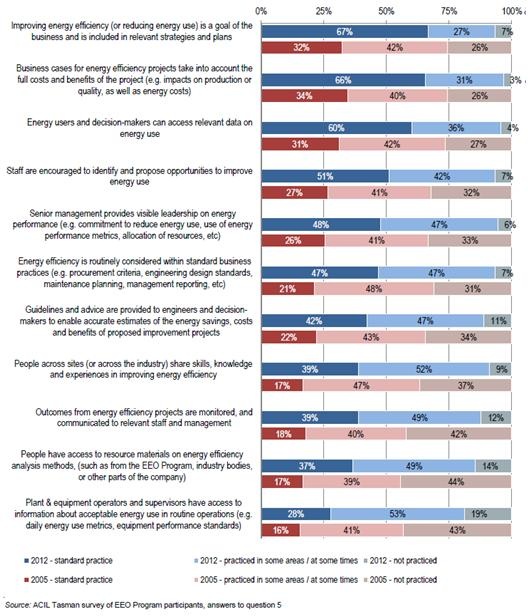It makes sense to expand mandatory energy management
A regulatory impact statement has recently been released showing there are likely to be significant benefits from extending the Energy Efficiency Opportunities program to new, large energy consuming project developments such as a new mine or expansion of a chemical plant.
According to the impact statement, extending the program to these new developments (not just existing facilities) is likely to realise energy savings in the realm of 11 per cent on average for the typical new project. In addition these savings are expected to deliver an annual financial return in the realm of 19 per cent.
The Energy Efficiency Opportunities (EEO) program requires businesses that already consume greater than 0.5 petajoules of energy per year (equates to an annual energy bill of roughly $10 - $20 million) to put in place a range of measures to monitor their operations’ energy usage and assess the potential for cost-effective savings in energy usage. This new proposal means a business that is about to be established via a major new project – such as a mine or industrial production plant – would also need to thoroughly consider and report on the potential for energy savings in the project.
It seems bizarre that government feels it would be worthwhile forcing companies to look for cost-effective energy savings via the EEO Program. If energy savings are cost-effective then you would think businesses would already be on top of this issue – after all they’re in it to make a profit, aren’t they?
However anyone that has worked in large or even moderately sized businesses knows there are a myriad of strange, and somewhat dysfunctional things businesses do. The TV mockumentary The Office isn’t popular and funny because it is completely divorced from reality. Rather its very success is built upon our ability to somewhat relate to the dysfunction of its workplace based on our own daily lives.
In the end trying to manage a business is complex. There are lots of things that need to be co-ordinated, predicted and controlled. Inevitably some things get lost between the cracks with divisions of responsibility and the need to prioritise. Managers can’t be expected to know everything.
Because energy is generally a small component of most businesses’ cost structure, and energy efficiency not a core function for most businesses, it has often been one of those things that falls between the cracks.
The EEO program tries to pull energy out of these management cracks. This is important because the potential for cost-effective improvements in energy efficiency across both industry and households is extremely large.
Using publicly reported data coming out of the EEO program, ClimateWorks has identified potential for major energy savings across a range of Australian industries that would provide paybacks within just four years (chart below).
Energy savings by sub-sector and payback period (% of energy use)

Source: ClimateWorks
When the EEO program was announced in 2004 I was extremely sceptical about whether it would make any difference. The assumption that people will suddenly take an interest in energy efficiency if you just provide them with information has been proven wrong many times over. But by trying to embed energy into management practices, and requiring public reporting of energy assessments, EEO has appeared to make a difference.
The survey results below, undertaken as part of a review of the EEO program, indicate that since 2005 there has been a noticeable improvement in the level of management attention and effort that goes into energy efficiency. I should note that this happens to coincide with a major spike in energy prices which should take a fair share of the credit for this change. Nonetheless the EEO program has helped ensure major energy consumers put in place the tools and practices to respond to these energy price rises.
Organisational practices for energy management in firms participating in EEO
2005 (red) vs 2012 (blue)

Source: ACIL Tasman survey of EEO Program participants















